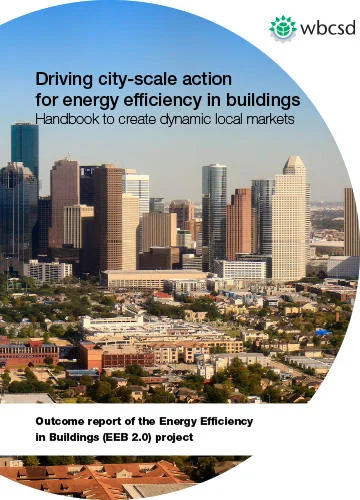
Published
31 January, 2018Type
PublicationBuildings play a critical role in combating climate change worldwide. They account for over one-third of final energy and almost 40% of energy related CO2 emissions. According to the Global Status Report 2017 of the Global Alliance for Buildings and Construction, we need to reduce the energy intensity per m2 floor space by 30% by 2030 globally in order to meet the global climate ambitions of the Paris Agreement. This presents a large challenge, given the building sector’s fragmented nature, but also a significant business opportunity as the construction sector accounts for well over 10% of GDP in most economies and 50% of global wealth is locked up in building assets.
The challenge of climate change is global, but action in the building sector has to happen at the local level. And in order to reach the ambitions of the Paris Agreement, action has to be better coordinated. Hence, over the last 4 years WBCSD’s Energy Efficiency in Buildings (EEB 2.0) project has developed and tested a methodology to bring together the many different groups that comprise the buildings sector to develop and implement action plans on energy efficiency at the city level.
This Handbook talks about WBCSD’s experience of conducting eleven EEB Laboratories in cities around the world, the impact and the lessons learnt. It also provides guidance for any interested organizations on how to develop business-led multi-stakeholder action plans for energy efficiency in buildings in cities.
I recommend to all businesses, organizations and cities that deal with the building sector to study the results and the lessons learnt of the EEB 2.0 project and to replicate this in their respective markets so that we can foster a global, but localized movement to transform the building sector that involves business at its core.
The Paris Agreement and the adoption of the Sustainable Development Goals (SDGs) have created an irreversible and irresistible pathway to a low-carbon world. Now it is time to turn that ambition into implementation.
